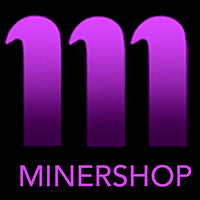Displaying Fluorescent Minerals

A fluorescent mineral display will allow others to view the results of your hobby and marvel at its wonders. The presentation can be as complex or as simple as you want. It can be as simple as a few carefully selected mineral samples arranged in a drawer and lit up by a handheld lamp - or as grandiose as a custom built wall unit, with automatic timers, different wavelength lights, and even halogen light to view the minerals in natural light. Whatever the plans and the budget a successful presentation must take several factors into account.



Among them are:
- Location - You want to show off your mineral collection and the beauty of your hobby; but your "viewers" seem to insist on having the lights on so they don't bump into furniture. This means that you must choose a location sheltered from the room's ambient light level (or make it easy to dim the lights).
- UV Lights - Longwave, Shortwave, Midwave, or all three? On/off switches to show the colors under different wavelengths? How many lights do you need? Build or buy? Will it fit in your budget?
- Mineral Display Case - Unless you are willing to stash your collection away in boxes, having to be pulled out of hiding every time you want to show them off, you will have to provide some kind of a display case.
- Mounting and Shelves - A UV display requires an innovative approach to the arrangement of specimens. Unlike ordinary minerals which can be placed on glass shelves, fluorescent minerals need to be "suspended" in air, or mounted on steps so that the UV light can reach them without going through barriers (such as a glass shelf).
- Education - Most people don't understand the Rockhounds' fascination with "rocks", much less with rocks that glow in the dark. Their only contact with fluorescence was in the '60s at some rock concert. A well-designed fluorescent mineral display can be appreciated by anyone, but more so if the fundamentals behind it are easy to explain.
- Protection - UV rays are dangerous. We know this, but our viewing audience may not. It is our job to make sure they cannot look directly into the lights. And don't forget the inquisitive kids who will find any way possible to find out what makes the rocks "glow". An added bonus gained by having a protective front panel is that the UV light doesn't escape and cause everyone's clothes to fluoresce - very distracting.
- Labels - some thought must be given to proper materials if you decide to use labels. Plain white card stock will fluoresce and ruin the display; even worse if you use colored stock. We prefer black negative lettering on a subtly fluorescent background.
Most of the points above are self-evident and require no further explanation. But there are a couple that might bear further discussion and perhaps provide some ideas:
Viewing Case - old projection tv, aquarium, entertainment centers, glass front panel cautions
Lighting - master switch, fade in/out white light, multiple lights at the same time
Protection - op3, lexan
Mineral Labels - black card stock
(more to come)

